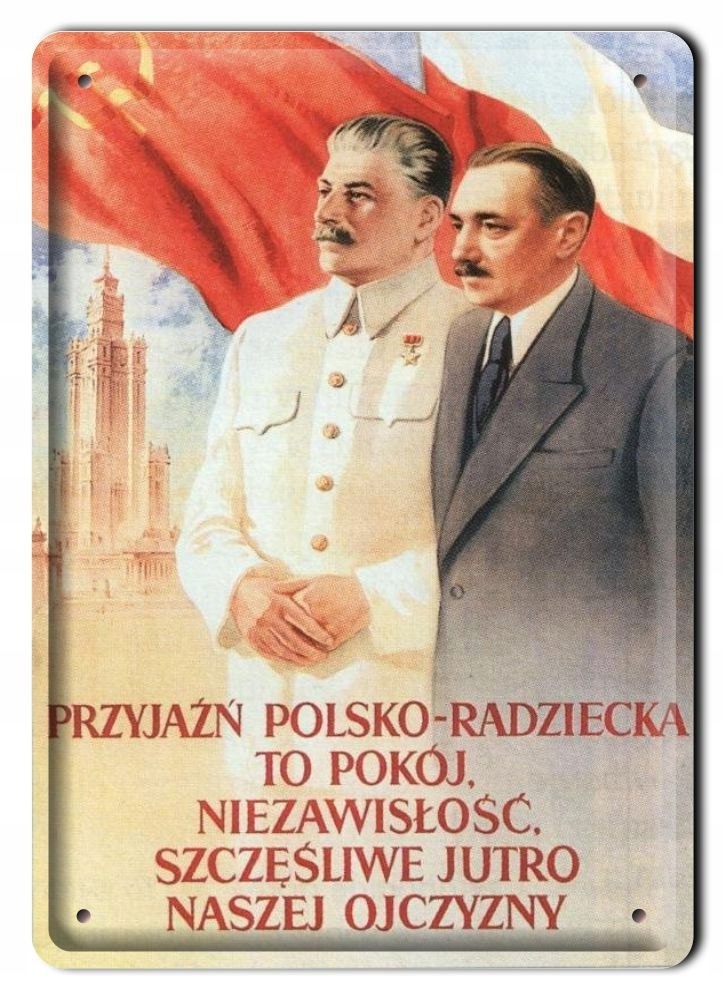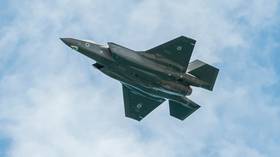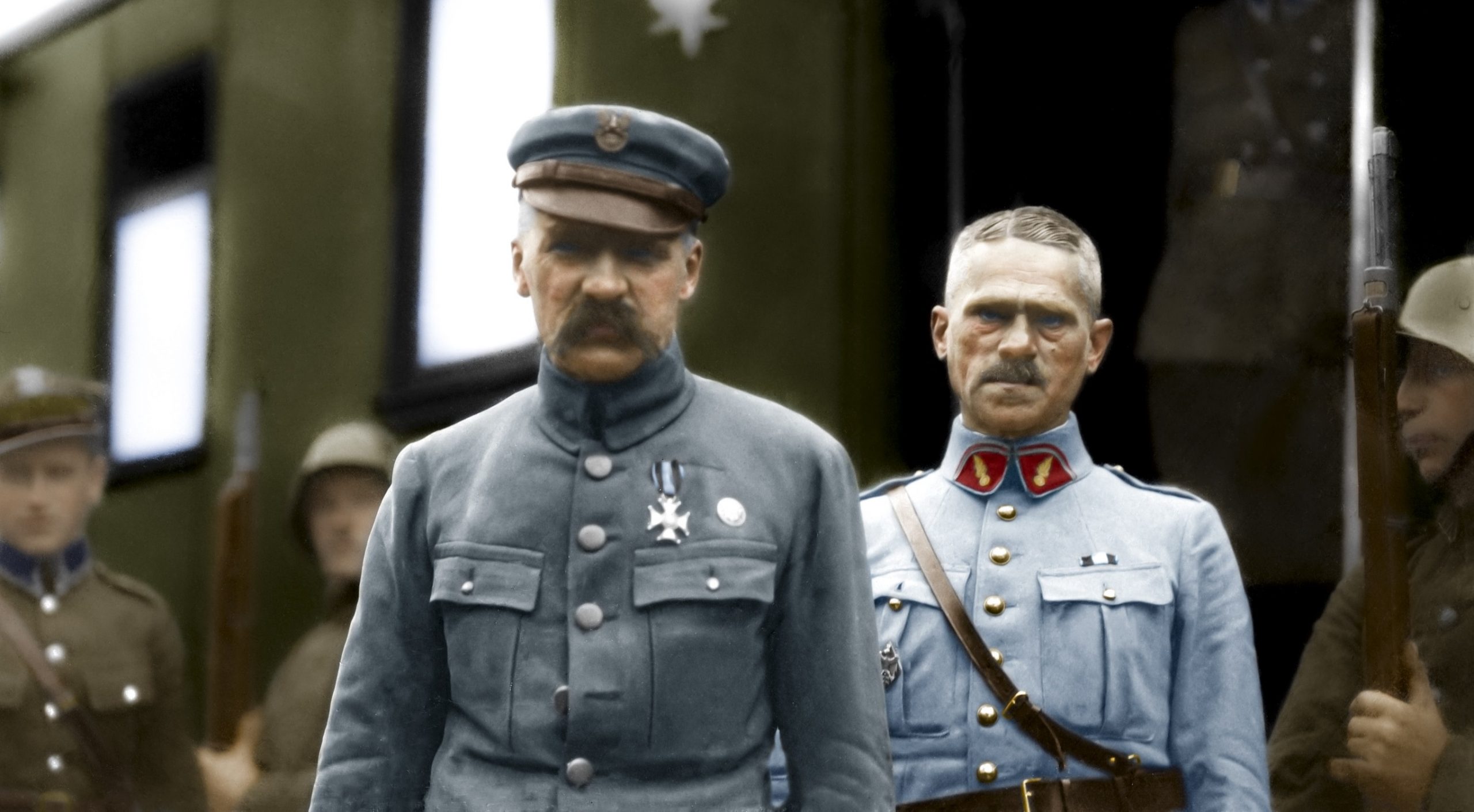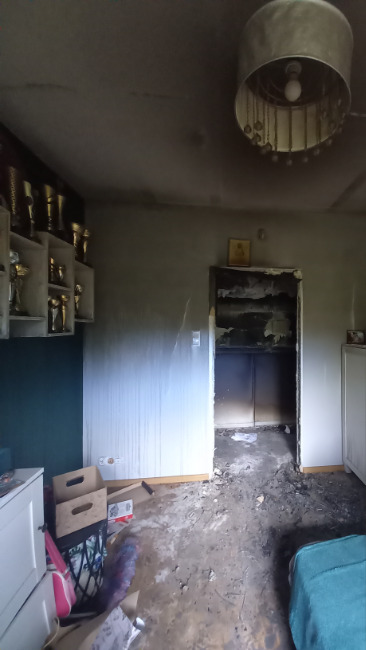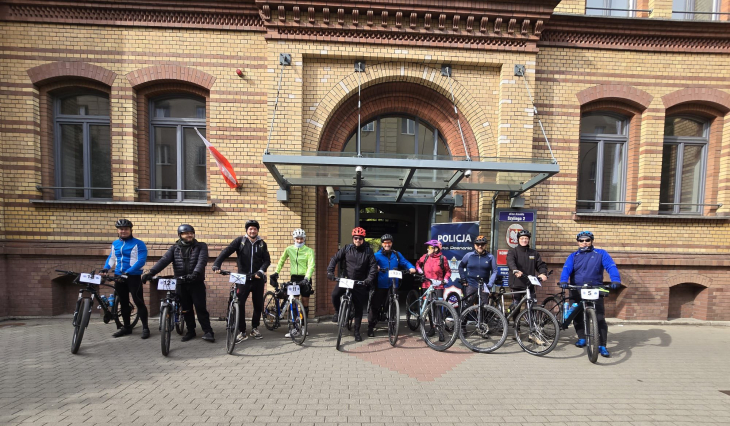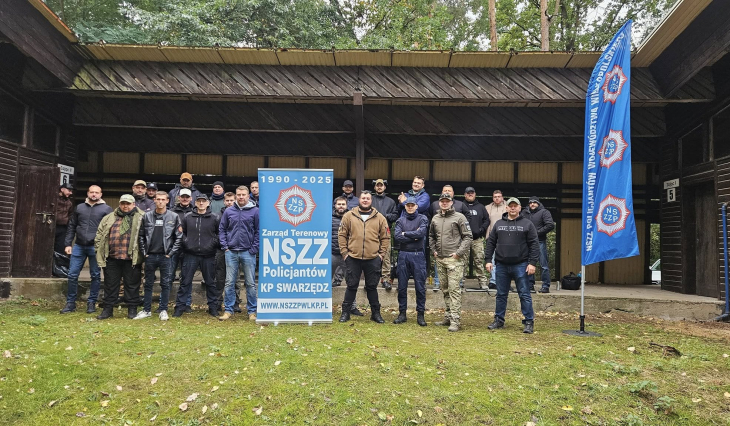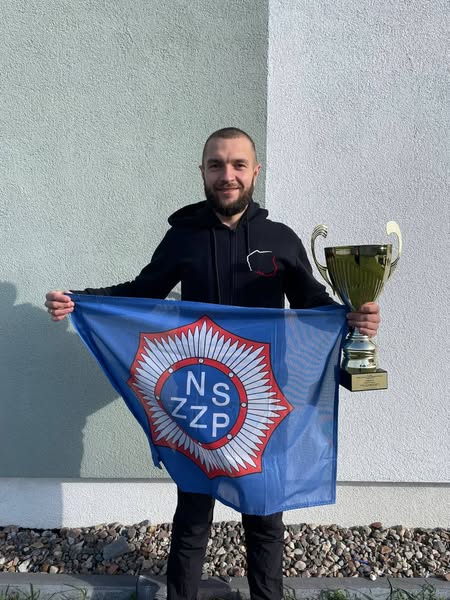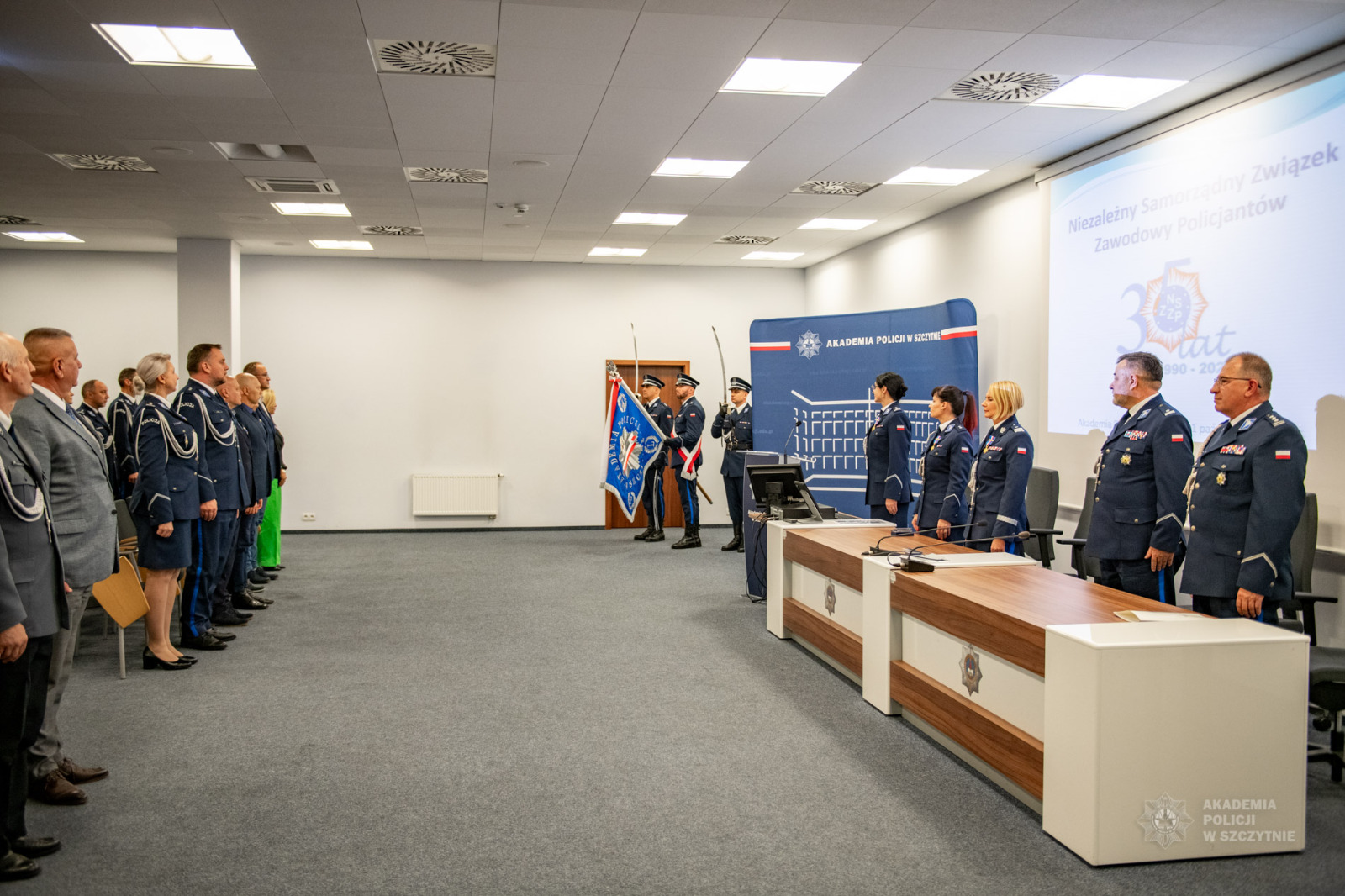When in the autumn of 1918 the population of central Poland increasingly raised the request to rebuild after 123 years of imprisonment of the independent Polish State, in Vilnius and in general – in the North-East Borders there was no thought to wait passively for developments. And the fortress was their all threshold...
It is worth recalling what happened in this hot day in Vilnius and in its immediate and further vicinity. Let me begin by quoting from Lech Wyszczelski's work "Wilno 1919 – 1920":
"Polish people of east Borders, long before the emergence of independent Poland, prepared to join them. Organizational activity began in Vilnius on 10 September 1918 and was conducted under the patronage of the Union of Military Poles. The Civic Committee was established in this town, which was appointed by the Committee on Public Security, and in which works under the authority of the Military Union of Poles in Vilnius took part by Captain Stanisław Bobiatyński. The issue of an agreement between the Polish, Lithuanian, Belarusian and judaic population was examined as a common defence against the danger of Bolsheviks. The agreement has not been reached. Therefore, the National Self-defense of Lithuania and Belarus was prepared to fight. Self-defence of Vilnius Land, Self-defence of Lidsko Land, Self-defence of Szczuczyńska Land, Self-defence of Esjska Land and Self-defence of Minsk and Grodno Land emerged. The organizers were generals Władysław Wejtko and Aleksander Bernatowicz, colonels Tadeusz Malinowski, Andrzej Tupalski and Władysław Raczkiewicz. The Poles remained only a stand-alone armed speech of the Polish Vilnius population.
From the Warsaw nomination, the commanders of the Polish self-defence formation in Vilnius were appointed General Eugeniusz Kątkowski, in Minsk General Władysław Wejtko, and in Grodno Colonel Władysław Podgurski. Gen. Wejtko, who received the appointment of the Chief Command of the WP to direct the full frontier conspiracy, manifested peculiar activity. His intention was to give self-defense to the characteristics of the regular army. Józef Piłsudski appointed him commander of the National Defence of Lithuania and Belarus on 8 December 1918. The general then proceeded to make a brigade of self-defence for the formation of military character. These formations were created for the intent of defending these lands from their capture by the Bolsheviks. In Vilnius, he started forming 2 infantry regiments and a single regiment of owlans. The Vilnius POW led by Witold Gołębiowski besides developed a dynamic activity. Only in Vilnius in December 1918, more than 1,200 volunteers volunteered for the formation of self-defense of accession. The organizer of self-defense in Lida was Lieutenant Wacław Szukiewicz, in Ejęszki, Captain Kazimierz Ilcewicz, Szczuczyń, Lieutenant Bolesław Lisowski. Polish self-defense formations were besides created in Minsk by General Alexander Bernatowicz. From the nomination of Józef Piłsudski, Colonel Fabian Kobordo took command of them.
At the end of December 1918, the National Self-defense of Lithuania and Belarus was dissolved. Its members were to volunteer to join the Polish Army, and Gen. Wejtko received a nomination as commander of the Military territory of Lithuania and Belarus. The military chief of Vilnius was appointed General Adam Mokrzycki, while his deputy Major Stanisław Bobiatyński. Gen. The entrance was expected to be armed in attempts to enter Vilnius Red Army – which was already at the tallness of Niemenczynch and the Soła railway station – after it was left by the Germans.
By the end of December 1918, 4 infantry battalions and a division of rides organized in the 1st Brigade were succeeded by Vilnius from its surroundings and residents. It was: 1st Regiment of Vilnius Ulans Major Władysław Dąbrowski, 1st Battalion of Captain Witold Szczerbicki, 2nd Battalion of Lieutenant Edward Kaczkowski, 3rd Battalion of Captain Mikołaj Żujewicz, 4th Battalion of POW Lieutenant Jan Gołębiowski and Recruit Battalion of Captain Władysław Piasecki. The brigade's command was entrusted to General Bolesław Krejczmer. The 2nd Brigade was formed from the Self-defense of the Lidsko Land formed by Lieutenant Wacław Szukkiewicz, and was commanded by General Adam Mokrzycki. After leaving the Germans at the turn of 1918 and 1919, Lida and the surrounding area of the 2nd Brigade began fighting the Red Army. Active improvement was carried out by the Self-defense of Grodzieńska Land, commanded by Gen. Mikołaj Sulewski. The formation of the Grodziński firearm Regiment, commanded by Major Jan Jackievicz, was undertaken. On 18 December 1918, part of the soldiers of this regiment took a military oath. There were those who refused to submit it. At the same time, the concentration in Vilnius 1st Brigade continued.”
According to Grzegorz Łukomski and Rafał Stolarski, authors of the work "Fight about Vilnius" as early as October 1918, more than 5 1000 people were organized in self-defense units, although the states were liquid. This work reads:
"In October, the number of members of the organization increased to 130 officers and about 5,000 soldiers registered but not armed and equipped. This second figure was, in fact, very hypothetical due to the fact that it was not possible to verify it. The deficiency of money was a major obstacle to the activity. They were collected by self-taxing members of the organization and donations of the Polish people.”
A lot of places Grzegorz Łukomski and Rafał Stolarski sacrificed self-defense from the Lida area, which was most likely the earliest:
"It is worth a closer look at the creation of self-defense in Lida, a town centre smaller than Vilnius, where the process was very characteristic. The initiators were: Lt. Stanisław Ivanowski, Lt. Wacław Szukiewicz, Dr. Romuald Sopoćko, Apothecary Rudolf Bergman. The National Council of the Lid Region was established. Its president was landowner Emilian Butkiewicz, vice president of Ivanowski. In addition, it was created by Bergman, Sopoćko, Fr. Initially, it was about defending against bandits in the region composed mostly of erstwhile German soldiers. In the area there were besides troops sent by the Bolsheviks, sowing confusion especially in villages, rebelling peasants against landowners.
The self-defense of the locals besides planned to take power from German cancer and thus prevent increasingly burdensome props, carried out by the Ober-Ostu troops. The propaganda action was carried out utilizing leaflets distributed throughout the county. They item the national nature of the organisation and encourage its support for active and material. Volunteers, mainly young people from surrounding townsmen, including Raduni and Zyrmun, besides came to the armed forces. The military commander was initially Lt. Shukiewicz, and shortly contact was established with General Adam Mokrzycki, who took her command. A horse squad and infantry battalion were formed, the second in the city itself. The characteristic thing is that in the first period of activity Vilnius was not contacted “suspecting that Vilnius would submit to us”. However, it seems that not only ambitious and peculiar considerations caused this. In Lida, it was not unreasonable to fear that Vilnius, with the support of the German troops, could become a Lithuanian centre and that local Poles would not be able to prevent it. Therefore, it was essential to keep communication with Grodne, Wołkowski, Białystok and Brest, centres little susceptible to Lithuanian temptations openly supported by the Germans.
The self-defense staff was located in the premises of the IRS. In the second half of October, cooperation with Vilnius was yet established, resulting in a gene. Intro he officially appointed Gen. Mokrzycki as commander of the Lidzka Self-defense. The chief of staff was Lt. Ivanowski, and Lt. Shukiewicz led a branch in the city itself. The attitude of the Germans to the organization was correct here, and even respectful. The provincial city did not lie in their interest in specified a way as Vilnius or Grodno, where there were many groups of troops, so the real possibilities of the Germans in the Lida area were limited.”
In turn, let us look at the process of organizing self-defense structures in Grodno and its immediate surroundings. Grzegorz Łukomski and Rafał Stolarski write:
"Grodn's self-defence was organised a small later, although organizational preparations began in September. The Catholic clergy played a large function in successfully exploiting their influence in society. The inspiration and creator of the activities was Fr Leon Żebrowski, then dean in Grodno. He supported materially, supplied weapons and food, but above all, through individual parishes he promoted the thought of fighting for Poland. The attitude of priests in the Grodno decanate was notable. They not only helped morally and materially, but besides led individual troops. For example, Fr Piotr Mazur, who disarmed the German station in Lunno, Fr Józef Bielawski, at the head of respective soldiers of the Self-defence captured the posts in Acidówka and Zaniewiecie, and Fr Józef Zera captured Sokółka with a bold attack.
The formation of the military organization was besides preceded by political activities of the leaders of Polish society. In late October a Citizens' Committee was established in the city. It was mostly made by local landowners and intelligence. The ultimate Council was composed of Fr Leon Żebrowski (president), Stanisław Ivanowski (vice-dress) and Antoni Żaboklicki (secretary). The main nonsubjective of the organization was moral and financial support of armed troops created.
The signal for the formation of military formations was the final surrender of Germans on the western front. On November 12, 1918, a group of officers and non-commissioned officers from the disbanded Dowbor Corps besides established the Grodzień Region War Council, whose president was Major Bronisław Heroowicz, and shortly passed on leadership to elder general Nicholas Sulewski.
As a consequence of subsequent meetings, the self-defense of the Grodno Land was created. The office of the organization were: Gen. Sulewski, Major Jan Jackievicz, Lieutenant Jan Szymanski, Lieutenant Antoni Spiewak. Major Heroewicz was entrusted with the organization of the troops. The fewer forces that the insurgents had did not let Grodn to be overrun, where the strong German garrison was located. A decisive action combined with the enemy's surprise enabled the control of close municipalities, including Sopoćkinie, Indura, Tołoczki and Bridges. This allowed the recruitment of volunteers from these areas to be extended and shortly strengthened the insurgent ranks. Already the next day, the Sopodkin branch counted 60 soldiers, and 10 additional volunteers were recruited in Tołoczeke, in the remaining few. Volunteers joined ranks with their own weapons, either stored for years in household homes or left by Germans and Russians during front fights, beginning in 1914/1915. The largest number of weapons was donated by the municipality of Toloczki, where residents, mostly the cave nobility, disarmed 3 German economical columns, gaining about 200 rifles, dense transport trucks and crucial amounts of food supplies. This allowed the creation of a regular shootout regiment.
The successes of the Polish troops prompted the German authorities, then mastered by the military councils, to enter into an agreement with Self-defense, according to which the spheres of influence were separated. The power of Self-defense extended to the county, and the Germans reserved exclusive influence in the city. The staff of self-defense could inactive be in Grodno.
POW played a major function in the creation of the Grodzieńska same Defense, conducting an interview, transporting weapons and ammunition, and, above all, training in military service. They took place in Emilia Rossochacka's flat at Police Street (later General A. Listowski). It was led by messengers from the Belarusian POW District.”
As has already been signalled, self-defense formations were besides formed in Minsk. I will mention again to the findings of Grzegorz Łukomski and Rafał Stolarski:
"In the first days of December 1918, General Wejtko was in Minsk. In the face of evacuations from the city of German troops, who besides agreed with the Bolsheviks here, selling them arms and military equipment, at the general gathering of the Minsk Self-defense, attended by General Wejtka, Władysław Raczkiewicz, Colonel Koborda and representatives of the POW, decided to dissolve the organization. On 12 December under the command of Colonel. Cobords of about 1,000 soldiers left the city, reaching mostly the points of the congregation of the Lithuanian-Belarusian Division in Zambrowa, Ostrów Łomżyński and Komorów or Vilnius. The point of crossing the demarcation line was the paws. They formed the Minsk firearm Regiment (86 Minsk Infantry Regiment).’
But the most crucial thing seemed to be what happened in Vilnius. Let me quote here fragments of Tomasz Strzembosz's work about Colonel Jerzy Dąmbrowski:
"Since September 1917, utilizing German permission, the Lithuanian Parliament (Taryba) has operated in Vilnius, which in October 1918 established the Lithuanian government, the pro-German-oriented Augustins Valdemaras. However, the government was in Kaunas in the north and intended to influence Vilnius, which was considered an ancient heritage of the Lithuanian state and Vilnius as its conventional capital.
Another Lithuanian government was preparing to take power over Vilnius and Vilnius – the Provisional Workers' and Peasants' Government of Vincas Mickiewicius "Kapsukas", formed on orders from revolutionary Russia and created by Bolsheviks, seeking to establish another russian republic. This government and this republic, with changing names and boundaries, had behind it the strength of the Workers' and Boys' Red Army (RKKA), which was to carry the "fire of revolution" besides to the west, including mainly to Germany.
Next to these 2 completely separate and hostile, but Lithuanian facilities of disposal, Polish centres, based on scattered in the area of Vilnius, Nowogrodźnia and Mińszczyzna, began to be built on the same autumn 1918. These points of Polish initiatives were created in Minsk, Szczuczyń, Lida and Vilnius, the second becoming the undisputed center of this movement very quickly. Its aim was to make a local armed force in these areas, which, erstwhile created here under the name "self-defense", was to search to occupy these lands and keep them for Poland.
The knowing of these centres led to the discovery of 1 self-defense of Lithuania and Belarus from the centre of Vilnius, reaching for Minsk and Kowna. It brought together local youth and Poles — soldiers and officers from the Russian Army and the 1st Polish Dowbor-Muśnicki Corps. At the end of 1918 there were respective 1000 people in her wards, which was a considerable achievement, given the dissipation of Polish office and the fatigue of 4 years of bloody war.
W Vilnius headed the self-defence troops in early December 1918 was headed by a general from the Russian army Władysław Wejtko, his chief of staff was sent from Warsaw by Captain Zygmunt Klinger, and the inspector and commander of the infantry captain Dr Stanisław Bobiatyński. The formations of the riding units were undertaken by 2 cavalry officers, Władysław and Jerzy Dąmbrowski, arrived in Vilnius in the fall of 1918. [...]
On 20 December 1918, they left Vilnius and went abroad: president of the Lithuanian Parliament (Taryby) – Antoni Smethona and Prime Minister of the Augustinas Voldemaras government. The fresh cabinet was formed on 26 December by Slezevicius, who began negotiations with Poles to form a common government. These negotiations broke down the Germans' leaving Vilnius and the escape to Kowna the Lithuanian government.
The Poles remained in the square and were created by them for 2 months Self-defense, commanded here by General Władysław Wejtko. This self-defense, mainly composed of infantry, in late December 1918 fought for the city, cleaning Vilnius from the last German troops and attacking the reinforced opposition points in any homes, organized by communists awaiting the entry of Bolshevik troops. Jerzy Dąmbrowski at the head of the cavalry besides participated in these fights. [...]
In early January, troops of scouts, POW soldiers and Vilnius railwaymen seized the station, until then maintained by the Germans. Vilnius was free. Free briefly, as already on January 3 Red Army troops appeared on the prefield of Vilnius. A riding and infantry squad under the command of a skirmish. Jerzy Dąmbrowski began his action on the suburb of the city, performing a combat reconnaissance, and then fighting between Nowa Wilejka and Vilnius and on the outskirts of the city with the Polish “red” division attacking here, but already on the morning of 5 January “red” began a concentrated hit on Vilnius. In the evening they seized Mount Trekrzyska, occupied the railway station and the area of the Sharp Gate. In this situation (especially due to the fact that there was no ammunition left) the Chief of Staff of the Self-defense Captain Z. Klinger made a decision to abandon the defence at 19. At the same time, the decision to leave Vilnius was made to retreat into Poland through the areas occupied by the Germans, where the Polish Army was created on free soil. On the evening of January 5, 1918, more than 1,000 Samoobrona soldiers, with Major S. Bobiatyński at the head, withdrew to Landwarów, where – after submitting their arms to Germany – they drove to Ostrów Mazowiecka, where the Vilnius firearm Regiment was formed. The Staff of Self-defense is in the grips.
In this way, the short Polish defence of Vilnius ended, the military initiative (one of many) was collapsed, self-sustaining by Poles and not supported by forces born in the centre of the Polish Army.
However, not all retreated beyond the German army cordon and not all laid down their weapons. I'm sorry. Jerzy Dąmbrowski, after leaving Vilnius with others and accommodation of his people in the White Wace, after obtaining approval from General Wąmbrowski, gathered all the Uwans, put respective 100 footmen on the sled and 40 people from the Officer's Legion and set off with them to the southwest to scope the areas held by slow extending their scope towards the east Polish Army.”
Let's besides look at how the events in Vilnius in the first days of January 1919 describe Lech Wyszczelski in the work “Wilno 1919 – 1920” already cited:
"The troops of Polish self-defence, looking forward to assistance from the Polish government and predicting that on January 5, Germany will hand Vilnius over to the Bolsheviks, decided to take the city themselves. The first armed clashes took place on 31 December. The 3rd Battalion composed of Poles, erstwhile German soldiers entered the action. City Hall was taken at Wielka Street. Germans were disarmed. A skirmish occurred from the Sharp Gate area. another armed incidents besides occurred. During this time, talks were held with German command, which undertook to leave part of the city, stopping control of the large Pohulanka and the railway station. Polish self-defence formations prepared on January 1st to fill the city, where the Polish-German demarcation line was created. General A. Mokrzycki took over the military power in Vilnius. He issued a call on 1 January calling for order and "guaranteeing the safety of life and property to all, regardless of nationality, residing in Vilnius, ensuring freedom of political existence to parties".
The communists opposed the effort to control Vilnius by Poles. However, there were no major incidents with Germans who evacuated from the city. The fight was just taken by Bolsheviks in the city. Their most crucial opposition point was at Wronia Street. On the evening of 1 January, Poles launched an attack on this opposition point. Jerzy Dąbrowski commanded it. The opponent surrendered on 2 January at 2 p.m. During the skirmish, 3 Bolsheviks were killed, 5 committed suicide, 76 were taken prisoner. The losses of Poles were 1 killed and 4 wounded. crucial supplies of weapons were obtained, mainly after German. They were to number over 1,000 rifles and 600 grenades. At night from 2 to 3 January, a complex railway group. Regular Red Army troops began approaching the city at this time.
On 4 January, the 1st Battalion was directed to the area of Nowa Wilejka, and 2 companies of the 4th Battalion marched right from it. These subdivisions had to halt the opponent, who was concentrated in fresh Wilejka, but who, at the same time on that day, did not exhibit an attack initiative. The 5th Vilnius Regiment acted differently, which entered the Vilnius attack on 4 January. These were subdivisions of the Pskov regiments, commanded by Mochnaczev and Vilnius, commanded by Zienkiewicz. Fights began. Poles supported the first storms of Red Army troops, but they lacked ammunition. Nor were they prepared on approaches to the city and its defensive positions. This was the first armed clash of the Polish Army — although irregular troops — with the Red Army. It was not included by historians as the beginning of the regular Polish-Russian war, but it carried a prelude to specified a war in the close future.
Meanwhile, regular Red Army troops were already approaching Vilnius, January 2nd firearm Brigade (BS) The Pskowska Division was located in the Podbrodzi area, and the 3rd BS from the same division was approaching Wilkometer. A neighbour from the left side of the mentioned division was the Western Division, whose tops reached Lida and Baranovich. Vilnius's task was given the 2nd BS of the Pskov Division Vladimir Aleksandrovich Oldieroggej, reinforced by the 5th Vilnius Regiment. The 1st BS of the Pskowska Division headed for Wilejka and Molodeczna. The 144th and 146th regiments of 17th DS Grigorija Mikhailovich Borzinskij and the division of the Western Division of Vladimir Aleksieevich Evszov besides followed from Molodeczna to Vilnius.
On 1 January, the 2nd BS commander ordered the 4th Regiment to head through Podbrod on Mickuny to take the fresh Wilejka railway station together with the 1st Regiment. On Vilnius, the 5th Vilnius Regiment was directed along the way from Podbrodzie via Niemenczyn. These troops were ordered to liquidate him by force in case of Polish resistance.
Gen. Władysław Wejtko has already received information on 2 January that Red Army troops from 3 sides – from Niemenczyn, Molodeczna and Lida – are approaching Vilnius. He ordered the launch of parts of the force to fresh Wilejka to block the march of the opponent. Part of the 1st Vilnius Regiment, 3rd Battalion and the Officer's Legion were centered in this area. The remainder of the 1st Vilnius Ulan Regiment remained in Vilnius, 1st Battalion, 4th POW Battalion and another insignificant subdivisions.
On January 3, there was a fight at fresh Wilejka. The losses were incurred by the Vilnius authorities who were forced to retreat. The Polish infantry attack besides ended without success. Poles withdrew to Vilnius. On that day there was a skirmish with Germany, resulting in losses in the killed, including officers. The biggest threat was the Russian columns approaching from Niemenczyn and Nowa Wilejka. After fighting, Poles were forced to retreat to the city centre. The reinforcements forced the Russians to halt the attack.
Despite his interruption of the gene. Enter and his staff were aware of the advantage of their opponent and their own infirmity. Poles lacked ammunition. After the first clashes with Poles, which were a surprise for them, the Russians concentrated their forces to decisively hit Vilnius. A concentric attack on the city was planned. A single command was established to lead this action. The strongest hit was at the center, and on the wings to lap take the name a small later. The refusal to lead the attack expressed command of the 5th Vilnius Regiment, accusing the management of the action of being incapable to plan and direct it. However, a group concentrated in Nowa Wilejka began to attack.
On 5 January, a day-long fight began in the suburbs of Vilnius. Then the Red Army entered the city center. On that day the Russians occupied the advanced town of Mount Trzykrzyńska, firing artillery fire especially the Zarzecie district, where the building of the Vilnius Defence Staff was located, defended by POW-wiaks. The infantry started to attack. The 1st, 2nd and 4th battalion defended confederate Vilnius sector including Zarzeza, while the 3rd Battalion and cavalry defended approaches to Antokola. The predominance of the Russians was so large that the consequence of the fighting was predestined. civilian representatives of the City Council proposed a gene. Intro to halt the fight. There was a fear of repression after taking the city by storm. From Warsaw, however, information about the deficiency of the anticipation of a rescue arrived.
In the absence of any chance of staying in the city, on 5 January at 7 p.m. Sigismund Klinger decided to end the fighting and to retreat from Vilnius. Its implementation was to take place on 6 January, erstwhile Polish self-defense troops were to break through to Rudniki, Raduń, Ejeszki and Szczujczyn. In the evening an order was given to leave the city by Polish troops. Evacuation took place in large chaos. There was no way to transport weapons, ammunition and food supplies. The soldiers were not prepared for a long march. Most headed for Landwarów. The Germans obstructed evacuation, temporarily interning Gen. Wejtko and Captain Klinger. Most soldiers concentrated in White Wace. There was an agreement with the Germans, concluded by the chief of staff of the Polish military self-defence defenders Vilnius Captain Klinger, under which these troops were to be carried without weapons by the Germans by rail transport to the Catch. This road reached Poland 154 officers and 1035 Privates from the 1st, 2nd and 4th Battalion, who were then part of the forming Lithuanian-Belarusian Division.”
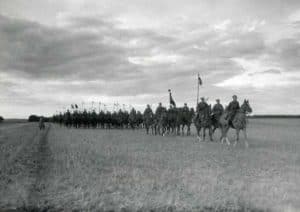
The destiny of the 1st Ulan Regiment of Vilnius Rtm. Władysław Dąmbrowski, as well as the 3rd Battalion of the Rifles of Lieutenant Kaczkowski and the Officers' Legion, headed by the Sub-Captain Rusiecki, was different. The command over the full was assumed by Rtm. Władysław Dąmbrowski. These troops headed south and – via Ejjszki, Szczuchczyn and Prużana – reached Brest, which they scored on 9 February 1919. Along the way, they were joined by various smaller and larger troops and groups of soldiers, including units of self-defense from Esjeszek, Lida and Szczujczyn, as well as the horse squad of Valerian Meysztowicz from Poniewoż. I will callback here the O de B 1st Vilnius regiment before its departure from Vilnius:
Commander – rtm. Władysław Dąmbrowski
z-ca d-cy-twirl. Jerzy Dąmbrowski
1 Squadron – Lieutenant Adam Zahorski
2nd Squadron – Lt. Olgierd Oskierko
3 Squadron – Lieutenant Konstanty Drucki – Lubecki
machine weapon division – Captain Bronisław Wąsowski
branch of horse pioneers – rtm. Mikołaj Michniewicz – Hetman
Let us return the voice to Thomas Strzembosz:
"With this moment, an epopey, which first brought Jerzy Dąmbrowski to the front of the military staff of the revived Poland, began, lasting a full month, making a young man-legende, and at the same time permanently binding him to a group of officers and soldiers who would fight him together until the end of 1919 [...] The first reinforcement of the Vilnius Branch of the Polish Army took place in Ejęszyszki – it was joined by the “Samoobrona Ejęszyska”. [...]
There was besides news of the defeats of the same - defence brothers. The strongest after Vilnius were self-defense units in Lida. The Lydian regiment of Self-defense numbered 40 officers and more than 500 officers and soldiers in December 1918. In the meantime, the attack on Lida, which was taken by soldiers of the Lida and szczuczyńsk Self-defense on the night of 9 to 10 January 1919, failed, the defeat was suffered. Only later, on 14 January, in Szczuczyno, where the defeat was followed, a merger took place with the Dąmbrowski troops of parts of the troops of the Lidzka and Ślączyńska Self-defense, from which 2 Lidzki Infantry Battalion under Captain Piotr Mienicki was formed. Self-defense Grodzieńska was equally strong. On 4 January the Germans authorized the accommodation of her regiment (yes! regiment!) in the erstwhile artillery barracks in Kopciówka, 10 km south of Grodna, where about 280 soldiers and officers were placed; any people left in another centres to conduct further recruitment. Meanwhile, on the night of 15th to 16th January Germans surrounded Cinderella with an infantry regiment and forced Poles to lay down their weapons. At the same time in Grodno, the commander of the Grodno Self-defense, Gen. Mikołaj Sulewski and the full staff were arrested. specified news reached the southward soldiers of Dąmbrowski, causing depression and taking faith.”
Despite the hard situation and the terrible news coming from all sides, the group of rtms. Władysław Dąmbrowski pushed tirelessly forward, breaking up the Bolshevik troops along the way. Following the capture of Brest, which fell from German hands, it merged with regular WP units which were on the another side of the Bug.
Wojciech Kempa



